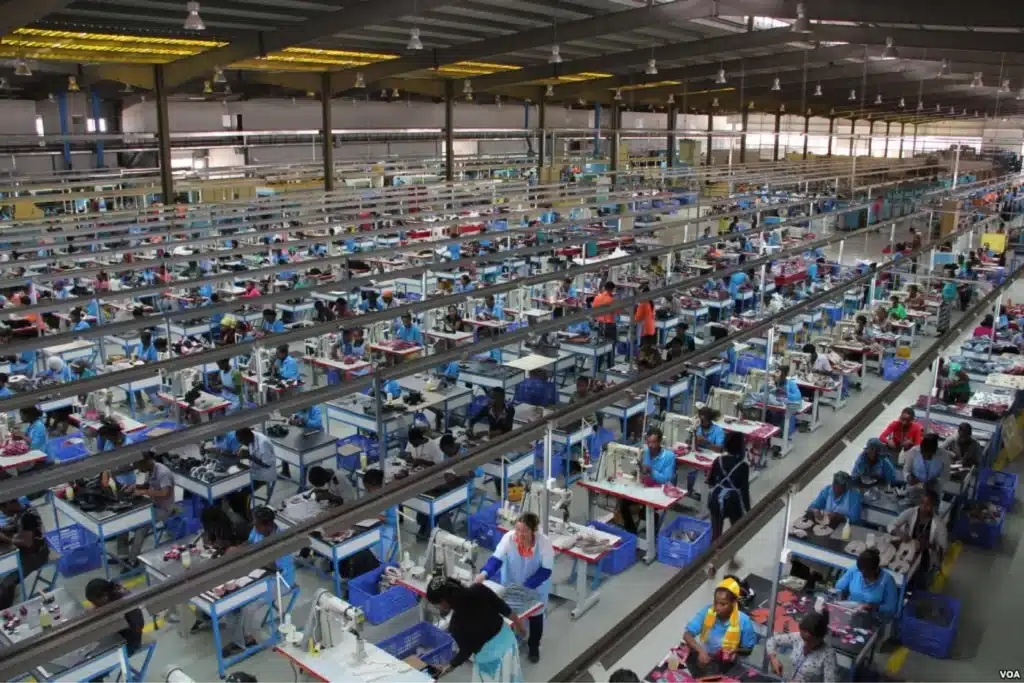President Trump announced sweeping new tariffs on Wednesday, calling it an “economic independence” declaration. The import taxes, imposed by executive order, have sent shockwaves through markets and triggered retaliatory threats.
The administration claims these measures level an “unfair playing field” in global trade, arguing that many countries charge higher tariffs on US goods than America imposes on imports. “In many cases, the friend is worse than the foe in terms of trade,” Trump stated, framing the move as both negotiation tactic and fulfillment of campaign promises.

10% Baseline Tariff for All Imports
A senior White House official revealed that the president would impose a “baseline” tariff on all imports to the US. This rate is set at 10% and will go into effect on April 5.
Companies bringing foreign goods into the US will pay the tax to the government, potentially leading to higher costs for consumers.
Countries Receiving Minimum Tariff Treatment
Several countries will face only the baseline 10% tariff rate. According to the White House document, these nations either maintain low trade barriers against US goods or have strategic importance to American interests.
Countries receiving this minimum tariff treatment include the United Kingdom, Singapore, Brazil, Australia, Chile, Turkey, Colombia, Egypt, Saudi Arabia, and El Salvador. According to the administration’s data, these countries typically maintain trade barriers of around 10% or have negotiated special status.
Understanding the Reciprocal Tariff Strategy
White House officials announced what they call “reciprocal tariffs” on approximately 60 countries they describe as the “worst offenders.” These tailored tariffs will go into effect on April 9.
According to the Trump administration, these measures are designed to counter what they perceive as unfair trade practices. The administration claims that many countries charge significantly higher tariffs on US goods or impose “non-tariff” barriers that disadvantage American businesses.
The reciprocal tariff plan follows a pattern: countries that supposedly charge higher rates to the US will face proportionally higher, but typically discounted, tariffs in return.
Highest Tariff Targets: Asian Manufacturing Powerhouses
The most severe tariffs target key Asian manufacturing centers:

- Cambodia faces a stunning 49% tariff (down from their alleged 97% barriers against US goods)
- Vietnam as the major beneficial country from “relocate capacity campaign” will see 46% tariffs (reduced from claimed 90% barriers)
- Sri Lanka and Myanmar both face 44% tariffs
- Laos will see 48% tariffs (compared to their reported 95% barriers)
Major Economic Powers and Their Tariff Rates
For the world’s largest economies, the impact varies significantly:
- China, America’s largest trading partner, faces a 34% “reciprocal tariff” (compared to their alleged 67% barriers), which would be added to existing tariffs for a total that could at 54%
- The European Union will see a 20% tariff (down from claimed 39% barriers)
- Japan faces 24% tariffs (versus reported 46% barriers)
- South Korea will see 25% tariffs (compared to alleged 50% barriers)
- India has been hit with 26% tariffs (versus claimed 52% barriers)
The administration’s approach provides somewhat lower tariffs than what they claim other countries charge, presenting this as a “discounted” reciprocal approach.
No Additional Tariffs on Canada and Mexico
The 10% baseline rate does not apply to Canada and Mexico, as they have already been targeted during Trump’s presidency.
The White House stated it would deal with both countries using the framework set out in Trump’s previous executive orders, which imposed 25% tariffs on all goods from both countries, with some exemptions and delays.
25% Tariffs on Car Imports
President Trump also confirmed a new 25% tariff on all foreign-made automobiles. This tariff went into effect almost immediately, at midnight local time.
Regional Impacts and Supply Chain Reshuffling
Southeast Asian manufacturing hubs face steep tariffs (Thailand 36%, Bangladesh 37%, Indonesia 32%, Malaysia 24%, Vietnam 46%, Cambodia 49%) that eliminate their cost advantage over China. With similar tariff barriers across regions, many factories may ironically return to China despite its 54% tariff rate.
China offers decisive advantages: superior manufacturing infrastructure, complete supply chains, work culture familiarity, production efficiencies, and policy incentives. Chinese manufacturers may also compress production costs further to offset tariff impacts. “When tariff avoidance benefits disappear, China’s established ecosystem may become attractive again,” noted one supply chain consultant.
Meanwhile, Middle East and Africa face uneven tariffs with Jordan (20%), South Africa (30%), and Madagascar (47%) seeing significant barriers while Saudi Arabia and Egypt face only 10% rates. This global manufacturing reshuffling threatens to disrupt already fragile supply chains worldwide.
Exemptions and Additional Measures
The reciprocal tariffs do not apply to certain goods, including copper, pharmaceuticals, semiconductors, lumber, gold, energy, and “certain minerals that are not available in the United States.”
Trump also signed an order to close the “de minimis” trade loophole used to ship low-value packages (valued at $800 or less) duty-free from China, Macao and Hong Kong. This order will take effect on May 2.
Global Market Reaction and Retaliation Threats
Trump’s move sparked immediate threats of retaliation, intensifying global trade war concerns. According to Fitch Ratings, the effective US import tax rate has risen to 22% under Trump from just 2.5% in 2024, reaching levels last seen around 1910.
Stock markets in Beijing and Tokyo sank to multi-month lows, while European shares dropped sharply. Wall Street futures declined as investors moved toward safe-haven bonds and gold.
China, now facing steep tariffs on exports to the US, vowed countermeasures, as did the European Union.
“The consequences will be dire for millions of people around the globe,” EU chief Ursula von der Leyen warned, adding that the 27-member bloc was preparing retaliatory measures if talks with Washington failed.
